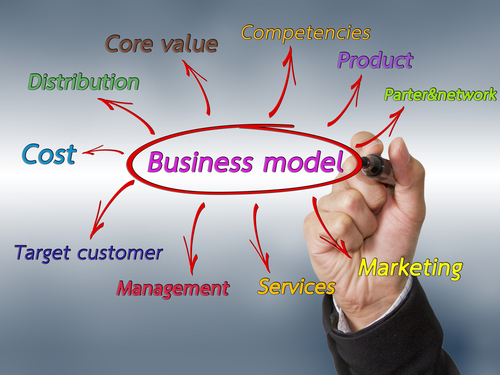

Complete Business Model
“Audio training from Sean Mize on how to structure your business!”Tags: Internet Business, Internet Marketing, make money online, Product Launch
Category: Make Money Online, Product Launch

What Is a Business Model?
The term business model refers to a company’s plan for making a profit. It identifies the products or services the business plans to sell, its identified target market, and any anticipated expenses. Business models are important for both new and established businesses. They help new, developing companies attract investment, recruit talent, and motivate management and staff. Established businesses should regularly update their business plans or they’ll fail to anticipate trends and challenges ahead. Business plans help investors evaluate companies that interest them.
KEY TAKEAWAYS
- A business model is a company’s core strategy for profitably doing business.
- Models generally include information like products or services the business plans to sell, target markets, and any anticipated expenses.
- The two levers of a business model are pricing and costs.
- When evaluating a business model as an investor, ask whether the idea makes sense and whether the numbers add up.
Understanding Business Models
A business model is a high-level plan for profitably operating a business in a specific marketplace. A primary component of the business model is the value proposition. This is a description of the goods or services that a company offers and why they are desirable to customers or clients, ideally stated in a way that differentiates the product or service from its competitors.
A new enterprise’s business model should also cover projected startup costs and financing sources, the target customer base for the business, marketing strategy, a review of the competition, and projections of revenues and expenses. The plan may also define opportunities in which the business can partner with other established companies. For example, the business model for an advertising business may identify benefits from an arrangement for referrals to and from a printing company.
Successful businesses have business models that allow them to fulfill client needs at a competitive price and a sustainable cost. Over time, many businesses revise their business models from time to time to reflect changing business environments and market demands.
When evaluating a company as a possible investment, the investor should find out exactly how it makes its money. This means looking through the company’s business model. Admittedly, the business model may not tell you everything about a company’s prospects. But the investor who understands the business model can make better sense of the financial data.
Special Considerations
A common mistake many companies make when they create their business models is to underestimate the costs of funding the business until it becomes profitable. Counting costs to the introduction of a product is not enough. A company has to keep the business running until its revenues exceed its expenses.
One way analysts and investors evaluate the success of a business model is by looking at the company’s gross profit. Gross profit is a company’s total revenue minus the cost of goods sold (COGS). Comparing a company’s gross profit to that of its main competitor or its industry sheds light on the efficiency and effectiveness of its business model. Gross profit alone can be misleading, however. Analysts also want to see cash flow or net income. That is gross profit minus operating expenses and is an indication of just how much real profit the business is generating.
The two primary levers of a company’s business model are pricing and costs. A company can raise prices, and it can find inventory at reduced costs. Both actions increase gross profit. Many analysts consider gross profit to be more important in evaluating a business plan. A good gross profit suggests a sound business plan. If expenses are out of control, the management team could be at fault, and the problems are correctable. As this suggests, many analysts believe that companies that run on the best business models can run themselves.
Types of Business Models
There are as many types of business models as there are types of business. For instance, direct sales, franchising, advertising-based, and brick-and-mortar stores are all examples of traditional business models. There are hybrid models as well, such as businesses that combine internet retail with brick-and-mortar stores or with sporting organizations like the NBA.
Each business plan is unique within these broad categories. Consider the shaving industry. Gillette is happy to sell its Mach3 razor handle at cost or for a lower price in order to get steady customers for its more profitable razor blades. The business model rests on giving away the handle to get blade sales. This type of business model is actually called the razor-razorblade model, but it can apply to companies in any business that sells a product at a deep discount in order to supply a dependent good at a considerably higher price.
Criticism of Business Models
Joan Magretta, the former editor of the Harvard Business Review, suggests there are two critical factors in sizing up business models. When business models don’t work, she states, it’s because the story doesn’t make sense and/or the numbers just don’t add up to profits. The airline industry is a good place to look to find a business model that stopped making sense. It includes companies that have suffered heavy losses and even bankruptcy.
For years, major carriers such as American Airlines, Delta, and Continental built their businesses around a hub-and-spoke structure, in which all flights were routed through a handful of major airports. By ensuring that most seats were filled most of the time, the business model produced big profits. But a competing business model arose that made the strength of the major carriers a burden. Carriers like Southwest and JetBlue shuttled planes between smaller airports at a lower cost. They avoided some of the operational inefficiencies of the hub-and-spoke model while forcing labor costs down. That allowed them to cut prices, increasing demand for short flights between cities.
As these newer competitors drew more customers away, the old carriers were left to support their large, extended networks with fewer passengers. The problem became even worse when traffic fell sharply following the September 11 terrorist attacks in 2001. To fill seats, these airlines had to offer more discounts at even deeper levels. The hub-and-spoke business model no longer made sense.
Examples of Business Models
Consider a comparison of two competing business plans where two companies rent and sell movies. Both businesses made $5 million in revenues after spending $4 million on their inventories of movies. This means that each company makes a gross profit calculated as $5 million minus $4 million, or $1 million. They also have the same gross profit margin, calculated as 20% of gross profit divided by revenues.
But things change with the arrival of the internet. Company B decides to stream movies online instead of renting or selling physical copies. This change disrupts the business model in a positive way. The licensing fees don’t change, but the cost of holding inventory goes down considerably. In fact, the change reduces storage and distribution costs by $2 million. The new gross profit for the company is $5 million minus $2 million, or $3 million. The new gross profit margin is 60%. Meanwhile, Company A fails to update its business plan and is stuck with a lower gross profit margin. As a result, its sales begin to slide downwards. Company B isn’t even making more in sales, but it has revolutionized its business model, and that has greatly reduced its costs.
Types of Business Models You Need to Know
- A mix of chain and franchise business model
- Ad-supported (subsidized) business model
- Affiliate business model
- Aggregator business model
- Agency-based business model
- Asymmetric business models
- Attention merchant business model
- Barbell business model
- Bidding multi-brand platform model
- Blitzscaler-mode business model
- Blockchain-based business models
- Bundler model
- Cash conversion cycle or cash machine model
- Discount business model focusing on high quality
- Distribution based business model
- Direct-to-consumers business model
- Direct sales business model
- E-commerce marketplace business model
- Educational niche business model
- Family-owned integrated business model
- Feeding model
- Freemium model (freemium as a growth tool)
- Freeterprise model
- Gatekeeper model
- Heavy-franchised business model
- Humanist enterprise business model
- Enterprise business model built on complex sales
- Lock-in business model
- Instant news business model
- Management consulting business model
- Market-maker model
- Multi-brand business model
- Multi-business model
- Multi-sided platform business model
- Multimodal business model
- Multi-product (Octopus) business model
- On-demand subscription-based business model
- One-for-one business model
- Open-Source Business Model
- Peer-to-peer business model
- Platform-agnostic model
- Platform business model
- Privacy as an innovative business model
- Razor and blade revenue model
- Self-serving model
- Space-as-a-service model
- Subscription-based business model
- Surfer model: reverse-engineering the gatekeeper
- Three-sided marketplace model
- User-generated content business model
- User-generated AI-amplified model
- Unbundler model
- Vertically integrated business model
